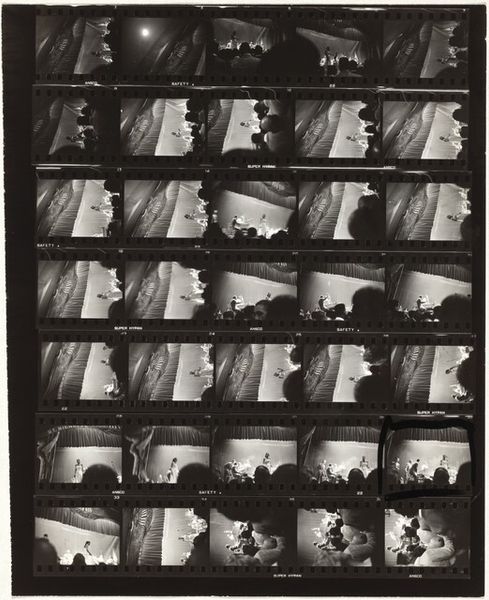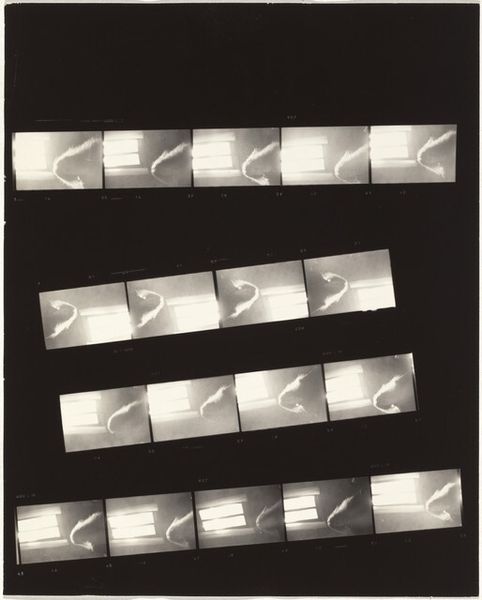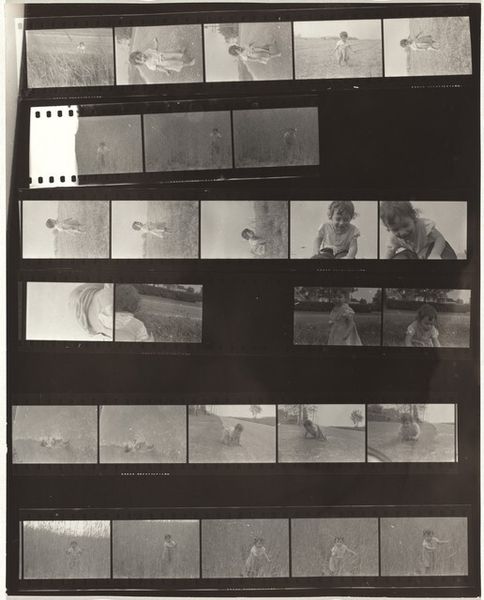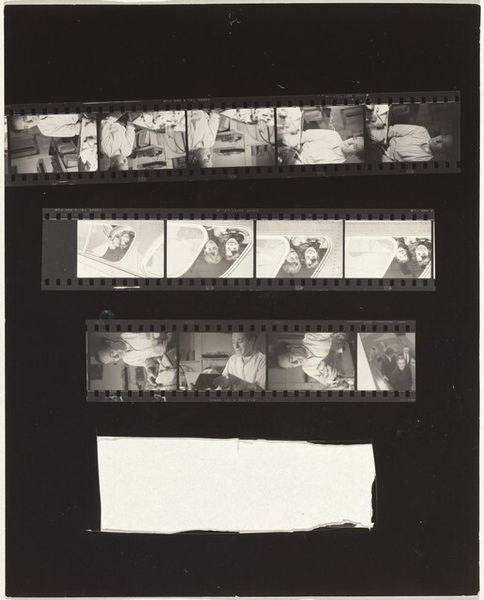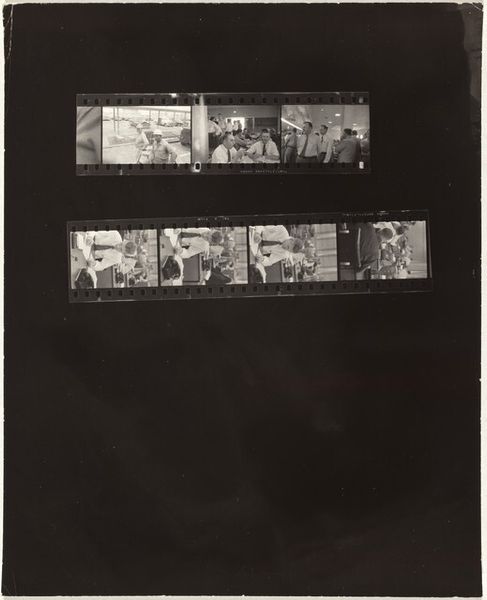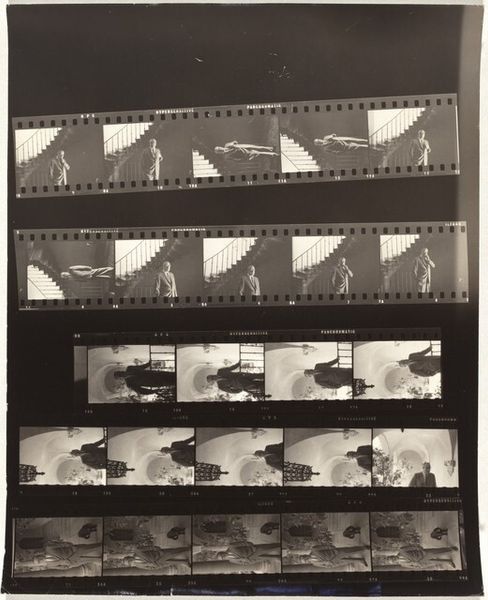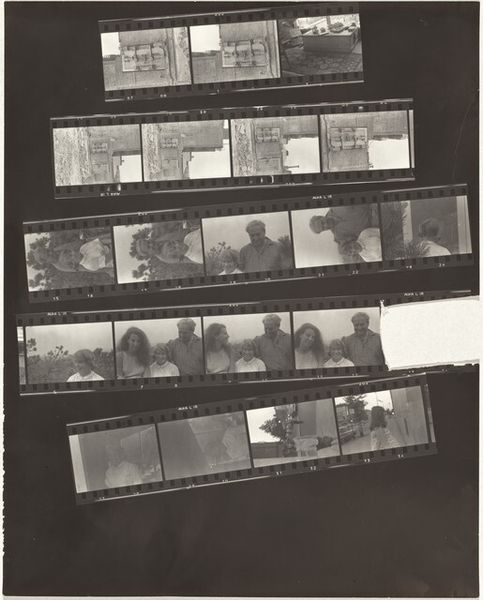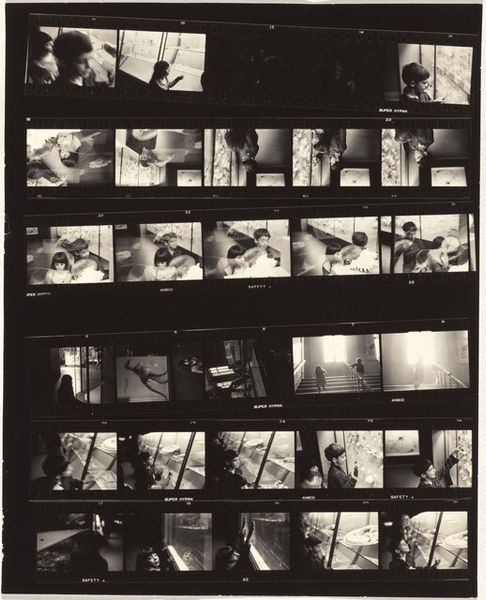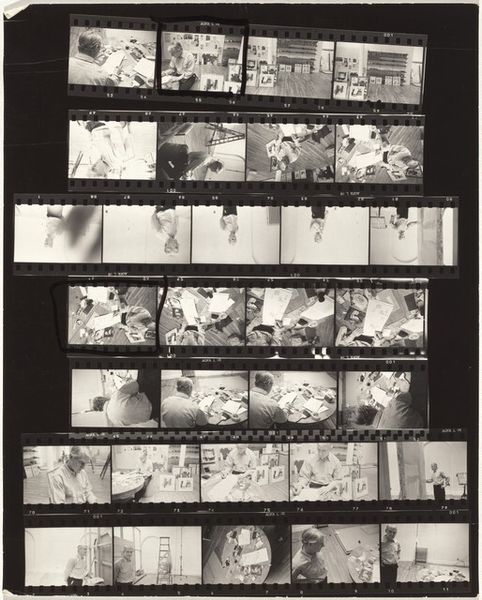
contact-print, photography
#
portrait
#
contact-print
#
photography
Dimensions: overall: 25.2 x 20.3 cm (9 15/16 x 8 in.)
Copyright: National Gallery of Art: CC0 1.0
Curator: Oh, the moodiness of this Robert Frank contact sheet is immediate, isn't it? This one, "Filming Elia Kazan's 'Wild River'--Tennessee 1," is believed to be from 1959, and its fragmented, almost staccato presentation gives you the impression of catching glimpses, stealing moments. Editor: Absolutely. It strikes me as a sequence from a dream, perhaps a troubled one, or a memory trying to surface. There is a blurry quality that's enhanced by the rigid borders of the contact print. The visible filmstrip edges lend it an industrial feel, yet what's captured within evokes a poignant human vulnerability. I find it intriguing. Curator: That vulnerability is spot on. Knowing that Frank was documenting the filming of Kazan's "Wild River," a film tackling the Tennessee Valley Authority's forced displacement of families, adds layers. You see a person, maybe an actor or a local, captured in these multiple exposures and varying poses, giving them a story. The contact print transforms from documentation to poetic commentary on displacement, if you will. Editor: Yes, and that's where the political undertones come through. These aren't polished, staged portraits, but raw glimpses into the process of filmmaking and perhaps also the tensions inherent in representing real-life displacement. You're seeing the machinery of representation itself being exposed alongside the subject. I mean, there’s an orange X on the film—do you think that's a rejection? I wonder what its purpose was? Curator: Could be a reject, a moment he didn't want…or maybe, knowing Frank, a sort of visual disruption, another layer to peel back. For me, it’s as if these images contain the suppressed echoes of the individuals and stories 'Wild River' tried, in its way, to tell. Frank doesn't give us answers; he delivers feeling, and that is his superpower. Editor: It prompts me to reflect on the photographer as observer and how images from Robert Frank become primary sources for understanding not only a particular film but also, more broadly, the politics of representing social change. Curator: It also raises so many questions: Whose story gets told, who gets left behind, and what does it mean to visually remember complex events such as these? This sheet brings it all rushing up to the surface. It’s really a wonderful way to create dialogue from photographs. Editor: A poignant fragment; its intentional yet fragmented composition leaves us with a striking look at truth.
Comments
No comments
Be the first to comment and join the conversation on the ultimate creative platform.
